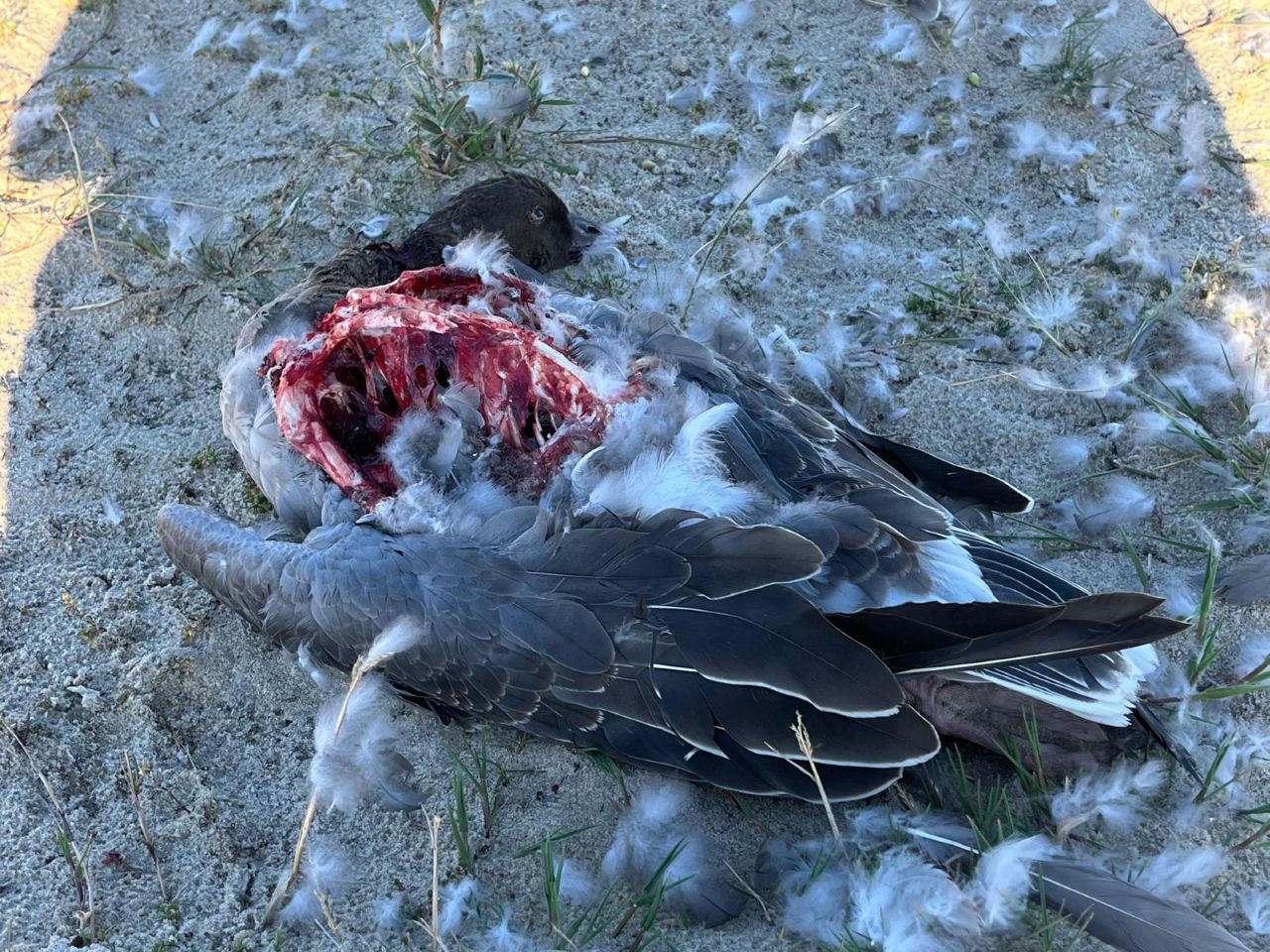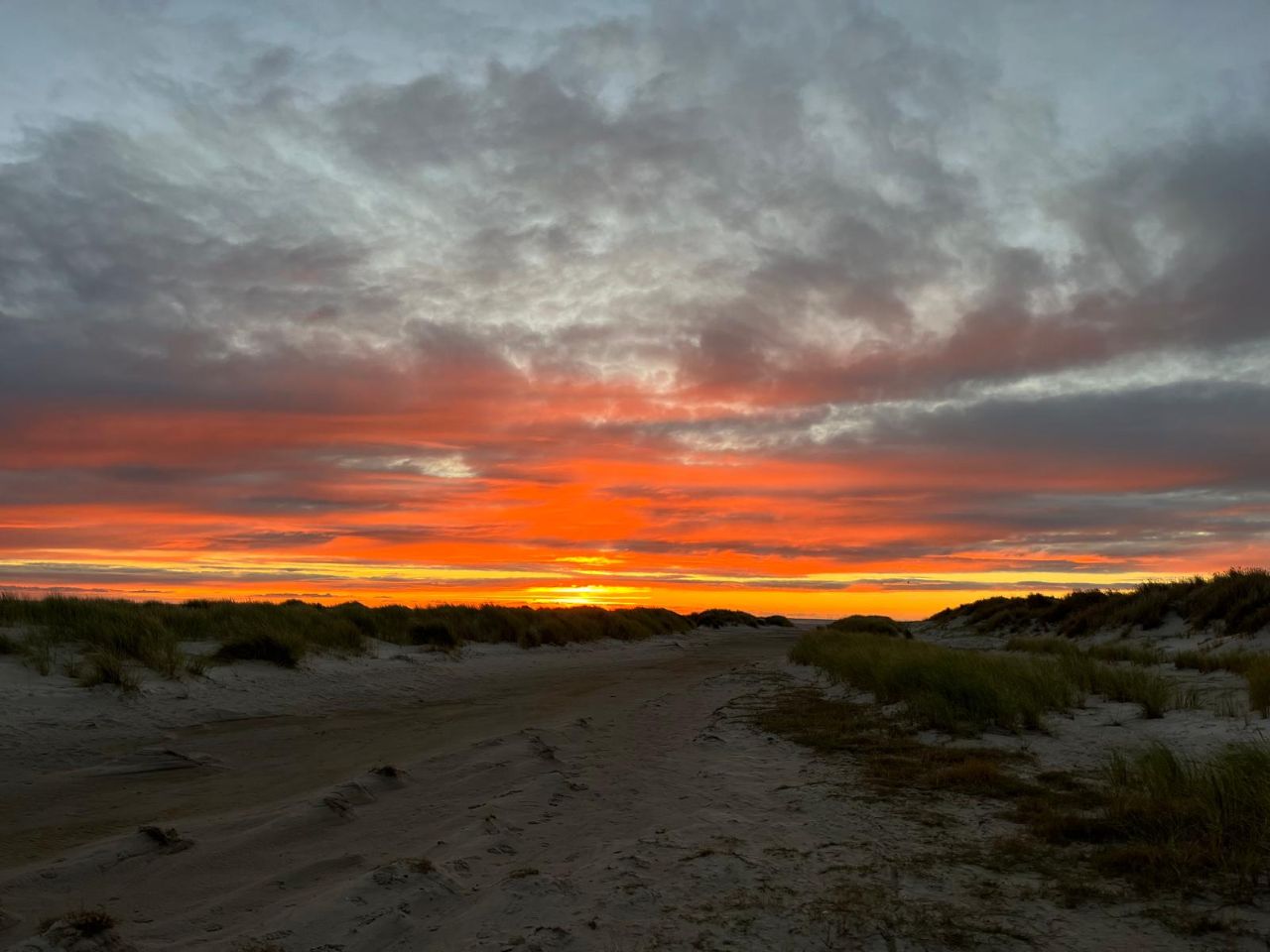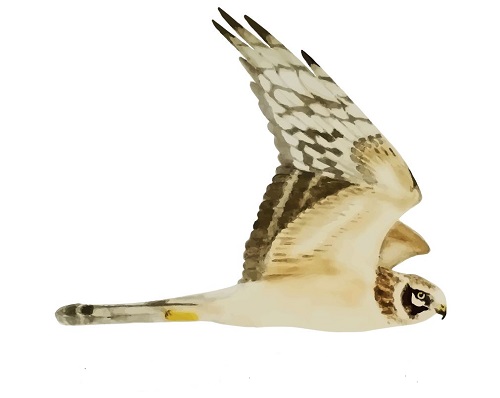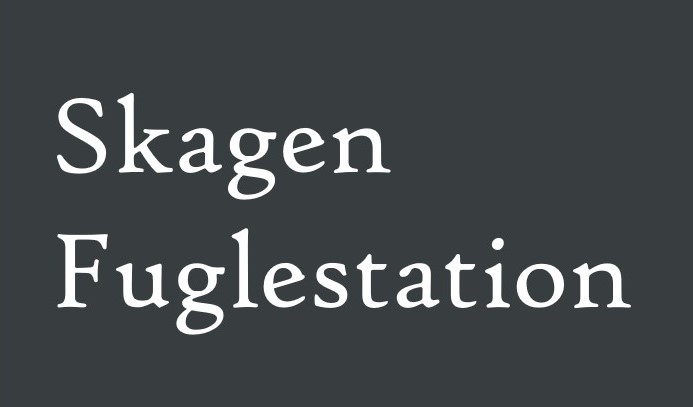Her på Skagen Fuglestations blog bringes korte nyheder i dagbogsformat om hændelser på fuglestationen.
A Blood Red Sunrise
This morning, as I was cycling out to the migration count at Worlds End 3, I flushed a raptor from the edge of the dunes. It was large and looked quite accipitrine-like, which made me think Eurasian Goshawk (Duehøg) but I wasn’t sure how likely that was. Knud was just behind me and I suggested it could be a common buzzard (Musvåge), which he thought was likely. However, when we approached, we saw that the raptor had been feeding on a pink-footed goose (Kortnæbbet Gås). This ruled out buzzard, as they wouldn’t be able to take even a relatively small goose like pink footed. We continued on to allow the goshawk to return to its breakfast, though Knud was able to get some looks at it later in the morning, confirming it was a young bird.

Pink-footed Goose (Kortnæbbet Gås) partially consumed by a Eurasian Goshawk (Duehøg). Photo by Miles
The goshawk sighting turned out to be a good omen, as we had several other good species during the count. I spotted a small alcid (alkefugle) flying northwest, which turned out to be an Atlantic Puffin (Lunde)! This was a lifer for me, and the third (and final) puffin species I have seen after Tufted Puffin (Toplunde) and Horned Puffin (Hornet Lunde) in the United States. Tufted Puffin has been recorded a handful of times in Europe, though never in Denmark, and Horned Puffin has never been recorded in Europe. Later, Florian had just commented on how it had been a good morning and I had see two lifers when he spotted a Eurasian Woodcock (Skovsneppe) migrating in over the beach. It had come in from the sea and flew directly past us before landing in the brush behind World’s End 3. I have not seen American Woodcock (Amerikansk Skovsneppe) either, so it was extra exciting to see this one!
It was a very good morning for interesting species, but also good to have Knud there to help identify some of the common species. There have been many Guillemots (Lomvie) or Razorvills (Alk) migrating southeast in recent days and we have not been sure how to identify most of them. Knud said nearly all alcids migrating southeast at this time of year are Razorbills and they are going to a large wintering area, further south in Kattegat. He also said that if we see flocks larger than 10, the majority will almost always be Razorbills. This was all really useful to learn, as it allows us to make more accurate counts.

Sunrise from Grenen. Photo by Miles
The ringing started out quite cold and it was hard for Sarah, Amira, and Mara to keep their fingers nimble but they were rewarded for their effort as the activity increased throughout the morning. They had many blue tits (Blåmejse) and three more Bearded Reedlings (Skægmejse)! It is Mette’s birthday (Happy birthday Mette!) and she visited Kabeltromlen got to ring several birds!
The restaurant at the lighthouse, Blink, is closing permanently. This evening, they had a sausage party to celebrate the time they have been open. Maciek prepared some delicious sausages, and the crew and Simon hung out for a bit. Later in the evening Sarah baked some delicious cookies! We are always happy to have more cookies, and these are especially tasty.
Ringing Kabeltromlen:
Highlights from World’s End 3:
People: Mara Glane, Florian Hatt, Sarah Partridge, Amira Nuseibeh, Miles Scheuering, Knud Pedersen, Simon S. Christiansen, and Mette Møller Christiensen.



